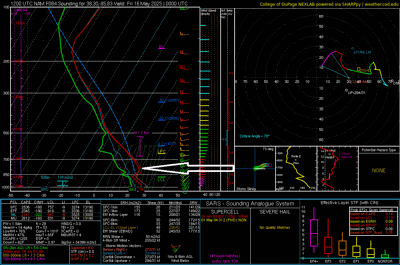Have you ever tried to hold one of those inflatable beach balls under water? It's not easy. That's because a beach ball is buoyant due to the fact that it weighs less than the water it displaces when submerged. Thunderstorms are also buoyant so think of storms as the beach ball and you as the capping inversion or atmospheric lid. A capping inversion or just "cap" for short, is a layer of relatively warm air aloft, usually several thousand feet above the ground, which suppresses or delays the development of thunderstorms.
Air parcels rising into this layer become cooler than the surrounding air, which inhibits their ability to rise further and produce thunderstorms. As such, the cap often prevents or delays thunderstorm development even in the presence of extreme instability. However, if the cap is removed or weakened, then explosive thunderstorm development can occur. What happens when you let go of the ball? It rapidly shoots upward and bursts out of the water which is exactly how thunderstorms behave as well.
The diagram below is a Skew-T which shows a vertical slice of the atmopshere. On the left, a green line represents the dewpoint and the red to the right is the temperatures. Notice how about a mile above the ground the red line bulges out indicating a very strong cap in our area this Thursday May 15th.

Image Credit: Dupage
The cap is an important ingredient in most severe thunderstorm episodes, as it serves to separate warm, moist air below and cooler, drier air above. With the cap in place, air below it can continue to warm and/or moisten, thus increasing the amount of potential instability. Or, air above it can cool, which also increases potential instability. But without a cap, either process (warming/moistening at low levels or cooling aloft) results in a faster release of available instability - often before instability levels become large enough to support severe weather development. Now when you hear this term you can understand how threats can be conditonal on whether or not the cap breaks. Thunderstorms don't just form when it's hot and humid, you still need something to force them, especially when there is an atmopsheric lid in place.












